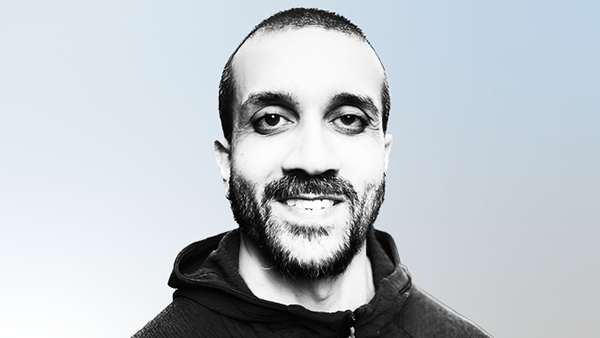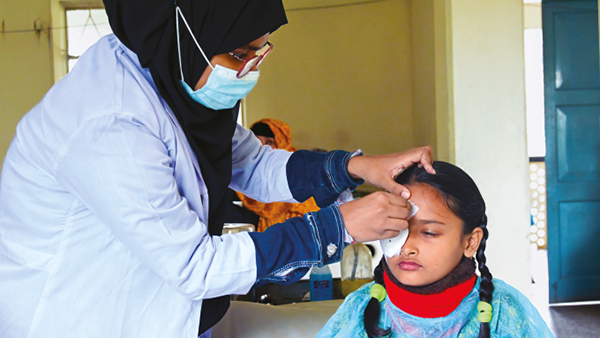You are viewing 1 of your 3 articles before login/registration is required
Tailored Treatment for Dry Eye
Providing patients with the education they need to understand their condition – without overwhelming them – is important in building trust.
In my specialty dry eye practice, I typically send patients home from their initial exam with a tailored treatment package. Along with a dry eye kit, the package includes information on their diagnosis, detailed instructions, and a treatment plan. The dry eye kits – which are personalized based on the type of dry eye a patient is experiencing – include a preservative-free artificial tear, a lid scrub, and often a nighttime gel or ointment. At the patient’s first follow-up appointment, I perform a more in-depth evaluation and discuss any add-on therapies.
I take this approach to avoid overwhelming the patients. At the same time, I want them to understand their diagnosis and take action on it. Most importantly, this approach helps to gain their trust. I explain that they have likely had dry eye for a long time and that it takes time and patience to get it under control. I let patients know they will progress through different stages as the condition improves and say how long this might take, perhaps three or six months. I try to get confirmation of their buy-in.
Fast relief
I provide patients with fast-acting relief from their symptoms in the first couple of weeks – and many feel a whole lot better than they have in a long time. If a patient has blepharitis, that’s the first thing that needs to be addressed before other therapies or treatments can be effective in the long term.
If patients’ dry eye has an inflammatory component and has thus progressed to a moderate stage with corneal damage, I’ll be appropriately aggressive with a mild corticosteroid drop, such as Flarex (fluorometholone acetate ophthalmic suspension 0.1%; Eyevance Pharmaceuticals) or Lotemax SM (loteprednol etabonate ophthalmic gel 0.38%; Bausch + Lomb), and artificial tears. Optometrists should never simply give patients a free sample of tears and tell them to buy it at the pharmacy – patients could have done that themselves. Instead, they come to us for our expertise; patients expect us to prescribe a specific treatment or intervention.
Around half of patients also have an ocular allergy component that might be triggered by their inflammatory dry eye cycle. When that starts to disrupt the tear film – and if it is not eradicated – it restarts the cyclic pattern and continues to get worse until intervention – I tell patients, “We need to reset your tear film.”
Deeper dive
At the second visit, the inflammation has likely calmed down. I image the patients’ meibomian glands, express them, and assess the secretions. I use the S390L Firefly slit lamp and take pictures of the glands to show patients what their glands look like, the blockages, and explain why this is problematic. Patients often say their vision has been fluctuating, so I tell them that stabilizing the tear film improves vision.
At this point, I also talk to patients about using a specialized dry eye nutraceutical to help address inflammation and improve their secretions over time, working from the inside of their body. Patients are aware of their systemic and gut health, and often look for a more natural solution. I tell them HydroEye (ScienceBased Health) is designed specifically for dry eyes and combats inflammation via multiple pathways. The formula contains the fatty acid gamma-linolenic acid (GLA), derived from black currant seed oil, and helps modulate the body’s inflammatory response (1).
It can be challenging when patients say they already take an omega nutraceutical; they may have researched it and are very invested in a specific product. I may suggest that they bring in the product so that we can discuss the ingredients. Often, these products are not high quality and can be a waste of money. I tell patients that HydroEye is supported by clinical data – GLA has been shown to improve dry eye symptoms in a variety of studies (2–4) and HydroEye has been validated in a clinical trial (5). So, I feel confident in prescribing it.
For LASIK and cataract patients, I use dry eye kits and automatically put them on nutraceuticals to help with their recovery. I make sure my surgical patients understand that they cannot have a procedure until their dry eye has improved and the tear film is optimized; otherwise, they will not get the results they are expecting. Patients appreciate that I have their best interests in mind. I make it clear that I want to maximize their healing response in recovery.
Go with the (work)flow
To comprehensively treat dry eye patients, eye care specialists must set up their practice appropriately. They must establish a workflow and make sure their entire staff is educated and on board. Just like implementing a new technology, this takes planning and strategizing. Offering personalized treatment kits is a great way to streamline patients’ experience, gain their trust, and boost your practice.
References
- P Aragona et al., “Systemic Omega-6 essential fatty acid treatment and pge1 tear content in Sjögren’s syndrome patients,” Invest Ophthalmol Vis Sci., 46, 4474 (2005). DOI:10.1167/iovs.04-1394
- R Kapoor, YS Huang, “Gamma linolenic acid: an antiinflammatory omega-6 fatty acid,” Curr Pharm Biotechnol., 7, 531 (2006). DOI:10.2174/138920106779116874.
- A Pinna et al., “Effect of oral linoleic and gamma-linolenic acid on meibomian gland dysfunction,” Cornea, 26, 260 (2007). DOI:10.1097/ICO.0b013e318033d79b.
- F Brignole-Baudouin et al., “A multicentre, double-masked, randomized, controlled trial assessing the effect of oral supplementation of omega-3 and omega-6 fatty acids on a conjunctival inflammatory marker in dry eye patients,” Acta Ophthalmol., 89, 591 (2011). DOI: 10.1111/j.1755-3768.2011.02196.x.
- JD Sheppard Jr et al., “Long-term supplementation with n-6 and n-3 PUFAs improves moderate-to-severe keratoconjunctivitis sicca: a randomized double-blind clinical trial,” Cornea, 32, 1297 (2013). DOI:10.1097/ICO.0b013e318299549c
The New Optometrist Newsletter
Permission Statement
By opting-in, you agree to receive email communications from The New Optometrist. You will stay up-to-date with optometry content, news, events and sponsors information.
You can view our privacy policy here
Most Popular
Sign up to The New Optometrist Updates
Permission Statement
By opting-in, you agree to receive email communications from The New Optometrist. You will stay up-to-date with optometry content, news, events and sponsors information.
You can view our privacy policy here
Sign up to The New Optometrist Updates
Permission Statement
By opting-in, you agree to receive email communications from The New Optometrist. You will stay up-to-date with optometry content, news, events and sponsors information.
You can view our privacy policy here








